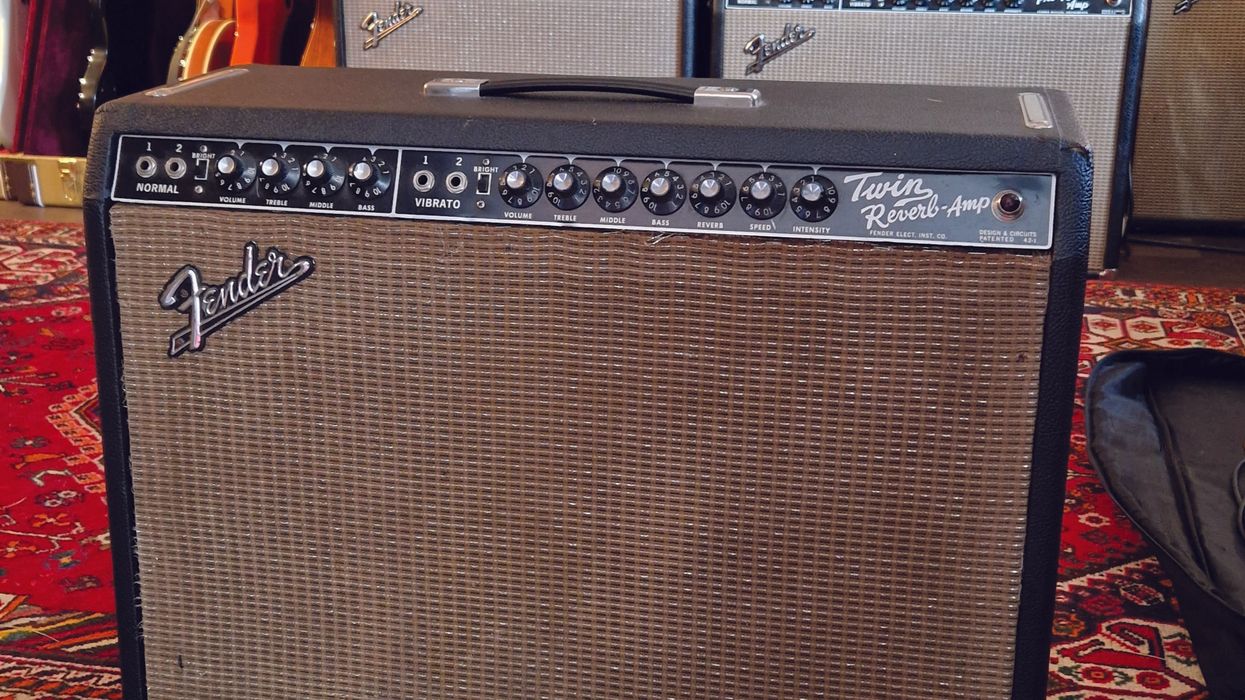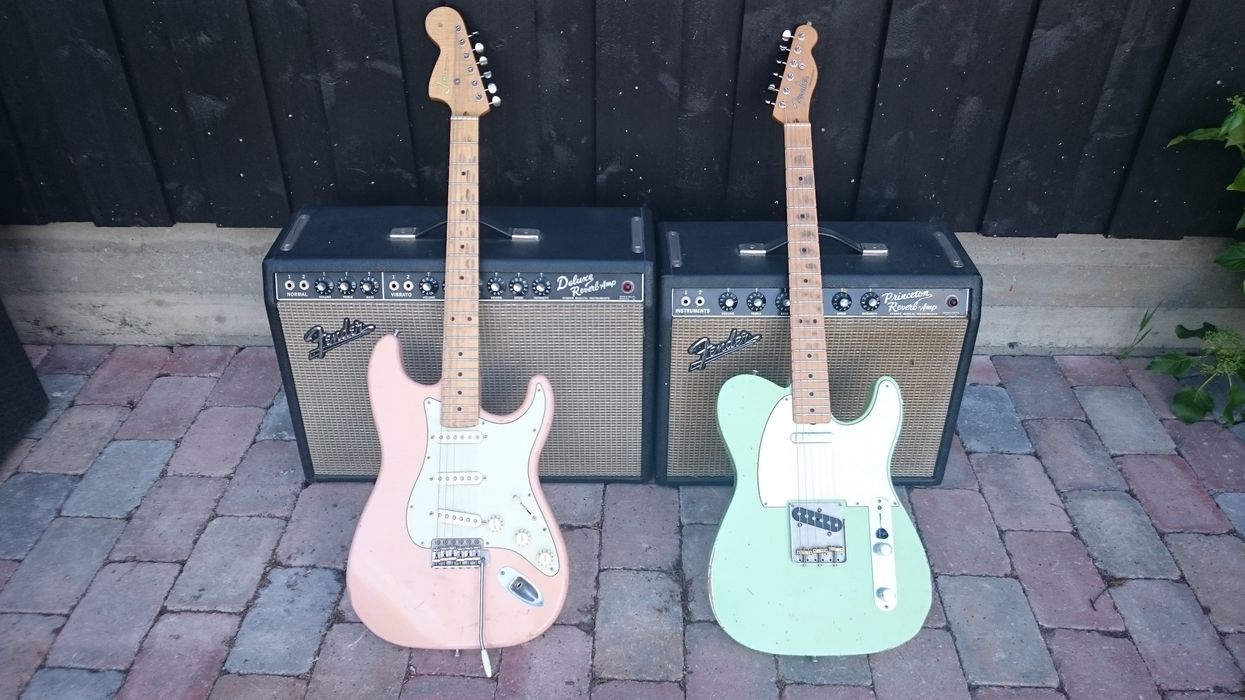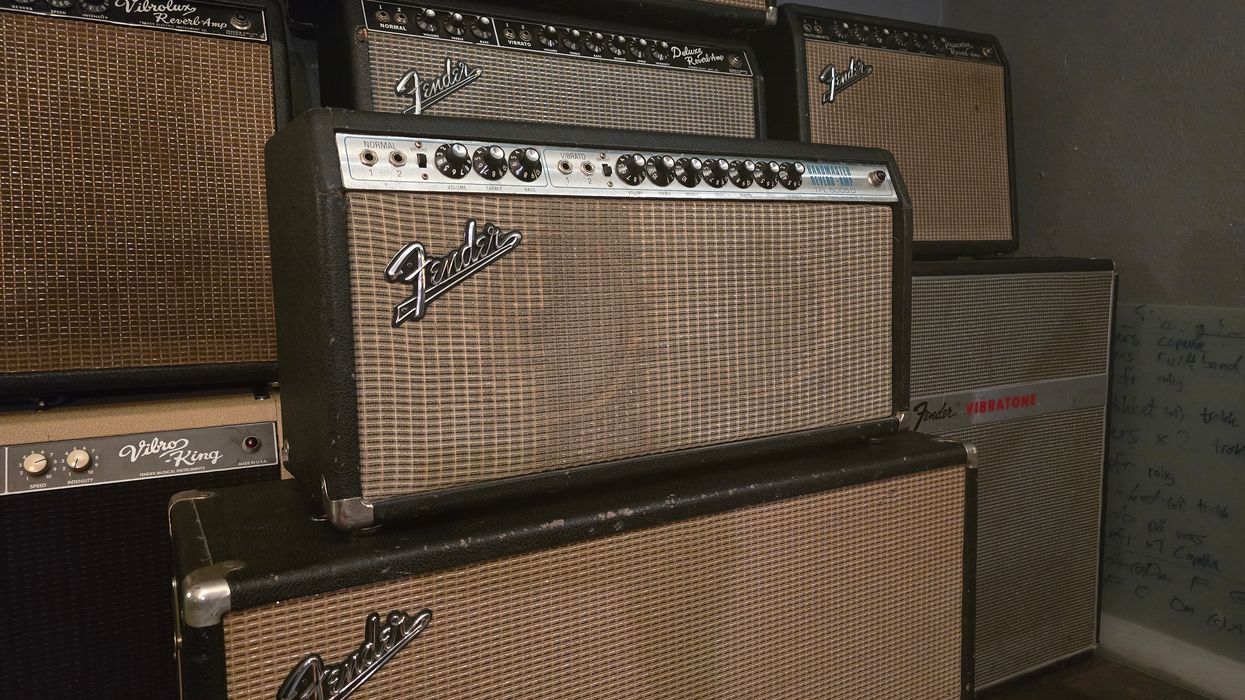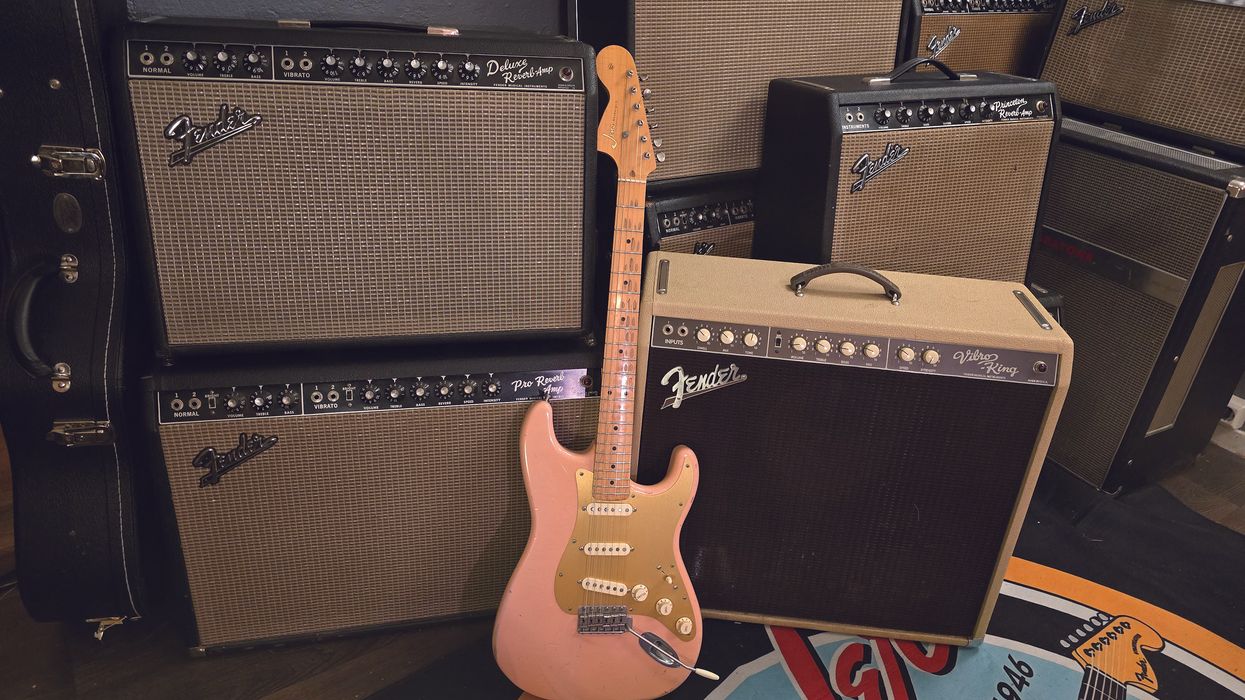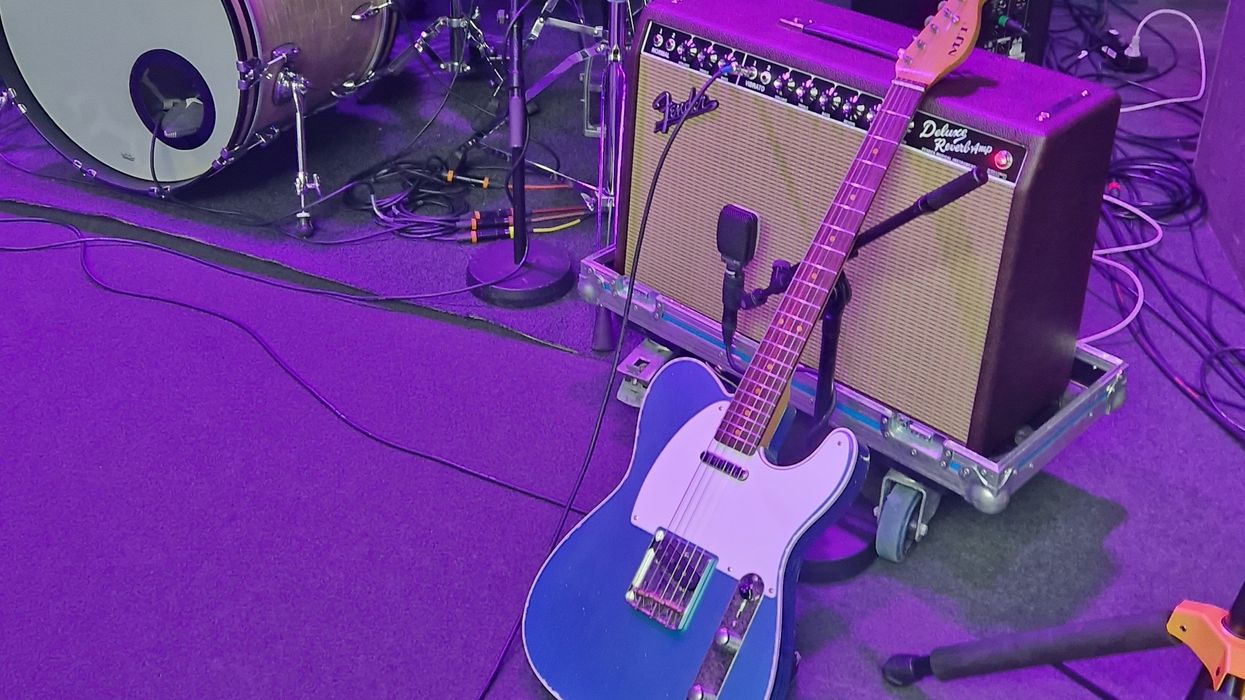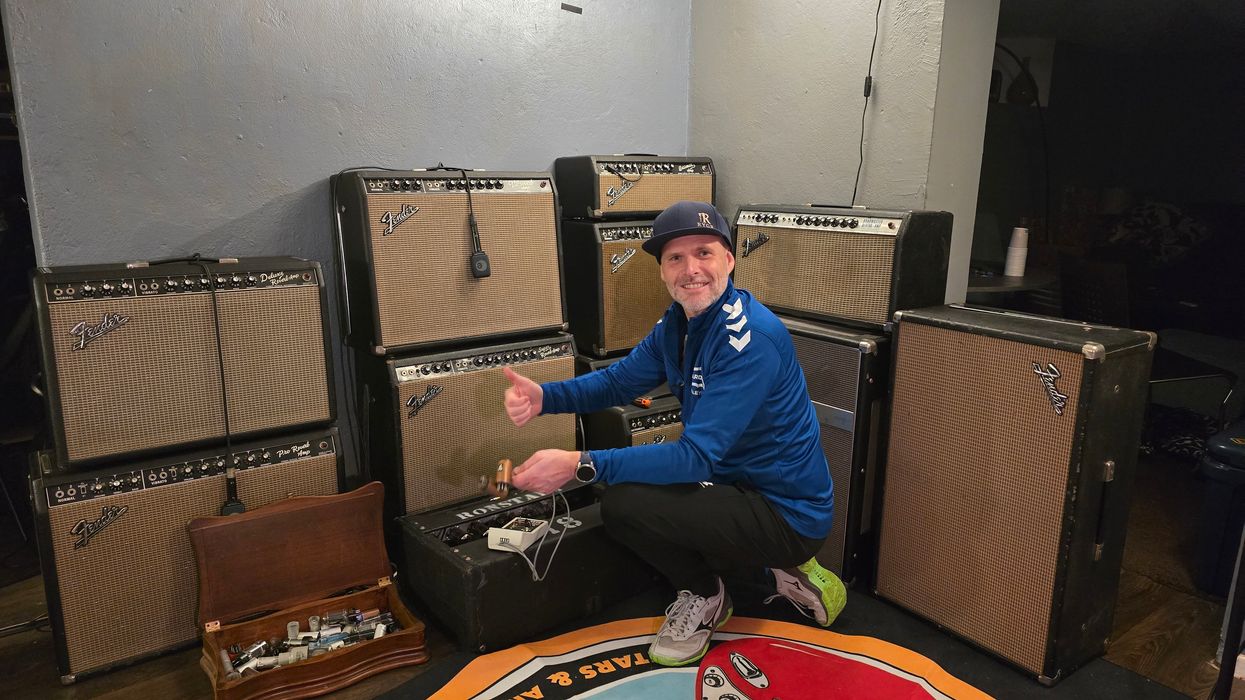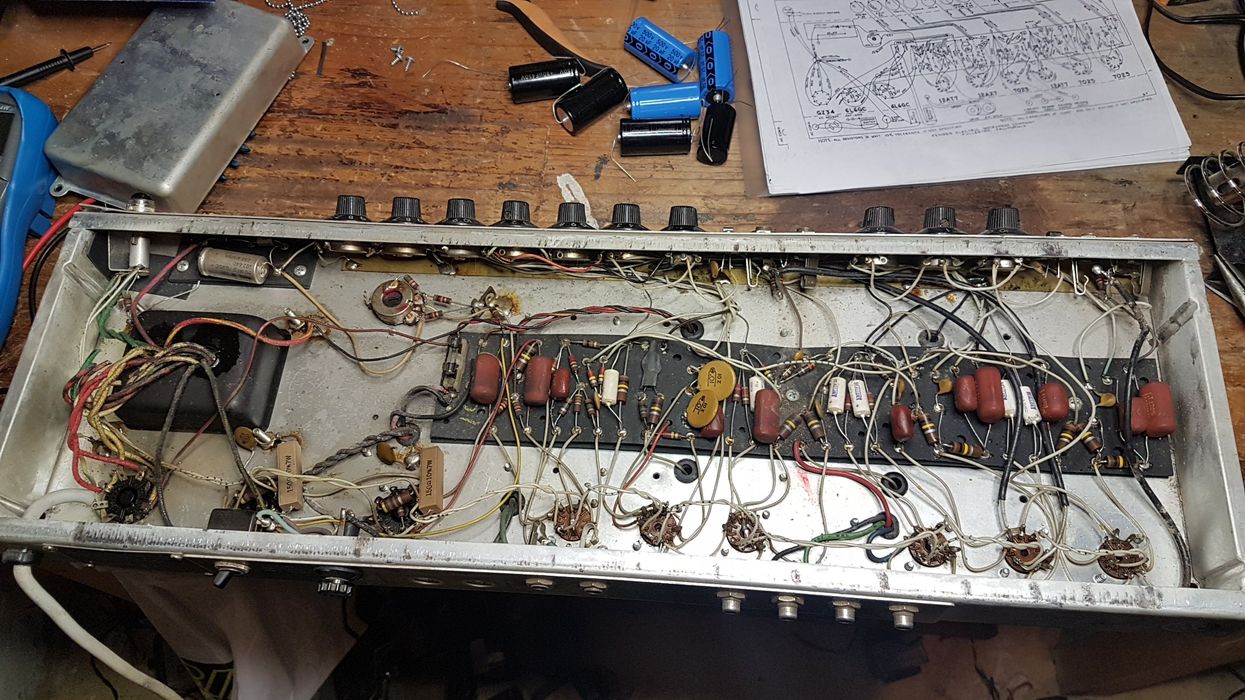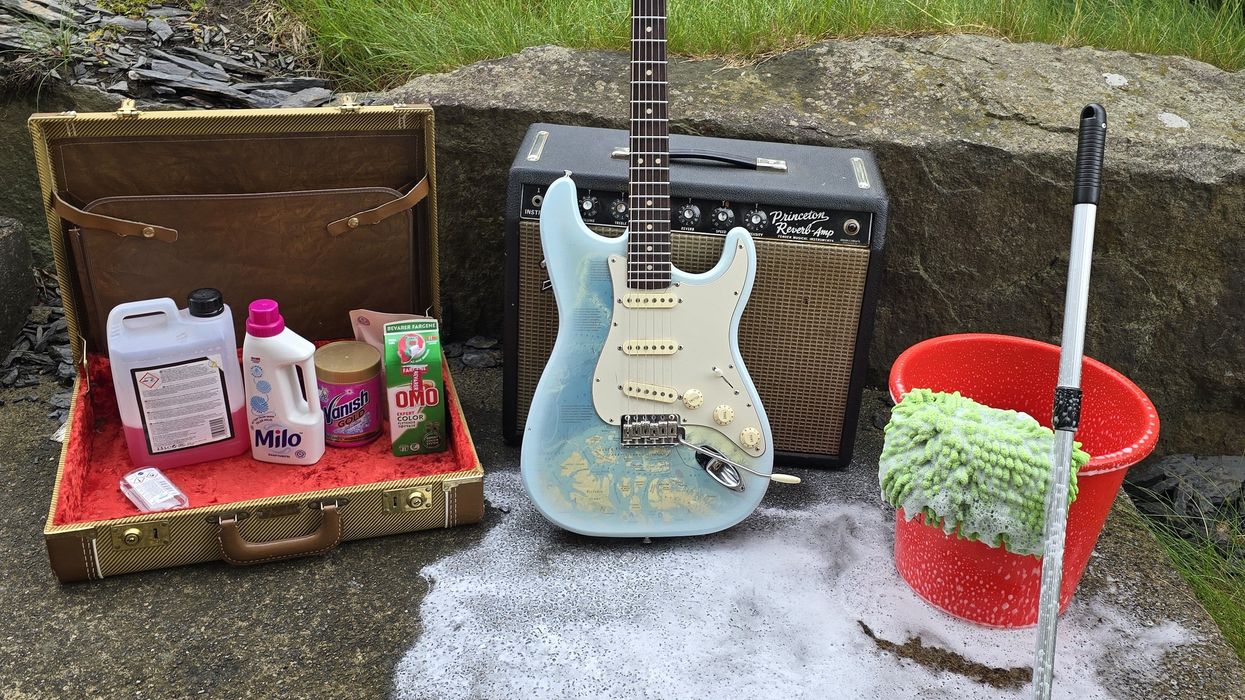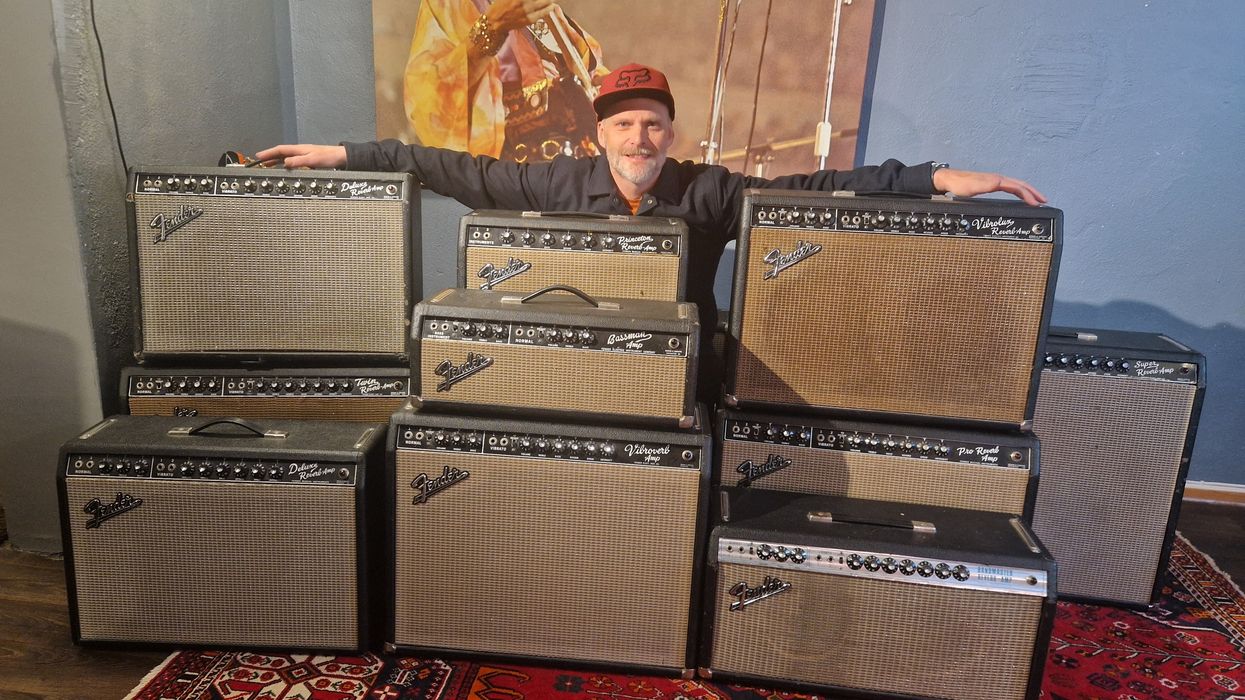“If an alien came to earth and wanted to hear an American guitar sound, I’d play him my Twin with a set of Jensens.”
I found this statement many years ago and it summarizes my feelings about the Twin Reverb, the flagship of Fender amps. So, let me share my insights about the biggest brother in the Fender family and discuss speakers, tube swaps, and how to unlock its secrets. My goal is to turn you all into educated fans of this legendary amp that has somewhat lost its place in the modern world. But first, a few facts.
Fender released the Twin Reverb as we know it today in 1963 as one of the first black-panel-era amps. It was a dual-channel combo with two 12" speakers, a diode rectifier, reverb, tremolo, and four 6L6GC tubes producing 85 watts. It was targeted at professionals and was the most powerful amp Fender had ever made. During the earlier tweed era, the Twin arrived as a 2x12" combo amp—first, a low-power 25-watt version with a single power tube pair; then, after 1958, a high power-version with four 6L6GC tubes and 80 watts.
“Speakers are like ice cream—everyone has their favorite.”
The blonde Tolex Twin came in 1960 and looked more like the black-panel classic that we know today, with separate normal and vibrato channels on the faceplate. Reverb and a diode rectifier were added to the black-panel Twin Reverb, which had all the features and the biggest iron that Fender could offer at the time. It was the first and only black-panel amp with a full tone stack on both channels, with bass, mid, treble, and a bright switch allowing you to dial in everything between a Dick Dale Strat surf tone and a mellow jazz sound for, say, a big box Gibson. The silver-panel Twin Reverb went through several changes from 1972 onwards, mostly in the power circuitry. There was a 100-watt and 135-watt silver-panel version with master volume. They aren’t very popular today but will work well as a cheap practice amp if you can find one in good condition.
The cons of the Twin Reverb are weight and loudness. Depending on the speakers, a Twin weighs 73 to 88 pounds. The 13-pound JBL D120F speakers that came in the original black-panel Twins were, in my opinion, too heavy for the amp, as were the four 10" JBLs in the Super Reverb. While these speakers are highly collectible, the weight of these ceramic JBLs will eventually tear the wooden cabinet apart. So, you cannot transport these amps around for regular touring.
My favorite vintage speakers for the Twin Reverb are the lighter Jensen C12N (7 pounds) or the Fender Oxford 12T6. The Oxfords sound surprisingly tight and good, and not as mushy as the Oxfords you find in other, low-powered Fender amps. The 1965 reissue black-panel Twin Reverb’s modern Jensen C12Ks sound unforgivingly stiff to my ears. Even if they improve after years of playing, I prefer to replace them with the lighter Jensen P12Q, which has a smaller voice coil and a vintage steel basket, or Warehouse Guitar Speakers’ brighter G12C/S. The G12C/S delivers a great authentic Fender tone at a reasonable weight (10 pounds) and price. But don’t solely trust my speaker advice. Speakers are like ice cream—everyone has their favorite. With the right speakers for your ears, a reissue Twin Reverb will deliver all the goods for you.
While other Fender amps typically break up at around 4 with a Strat, the Twin Reverb stays clean up to almost 6—and those clean notes are sharp as a knife’s edge and will hold up against heavy drummers and bass players. This is exactly what the amp is made for: being played un-miked in, say, a gospel band in a 300-seat church every Sunday, or on Friday nights in a cowboy bar in Bakersfield, circa ’63. It is designed to not break up. You therefore need to have your expectations set correctly—or be adept with pedals—to really appreciate the evil Twin.
A simple trick to lower the headroom is to disengage one of the speakers and pull the two inner or outer power tubes. You will, then, essentially, have a 1x12" 40-watt amp while still benefiting from the ambience of the large speaker cabinet. Other than that, there are no mods that I recommend with this amp. The Fender Twin Reverb is made for big occasions, and once you learn how to use it correctly, you’ll enjoy a very physical tone experience together with everyone else onstage—who will have no problem hearing this amp. I promise.


